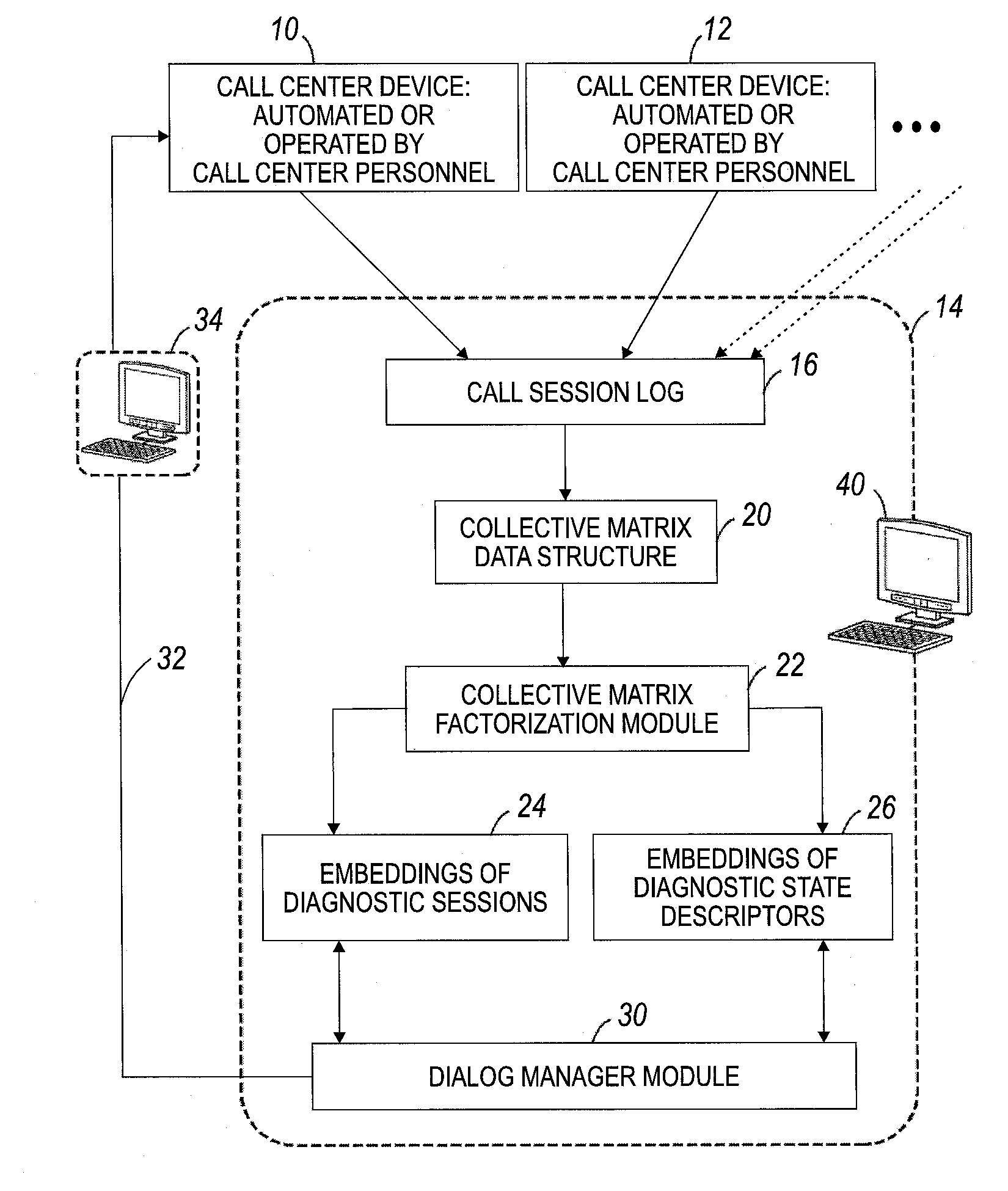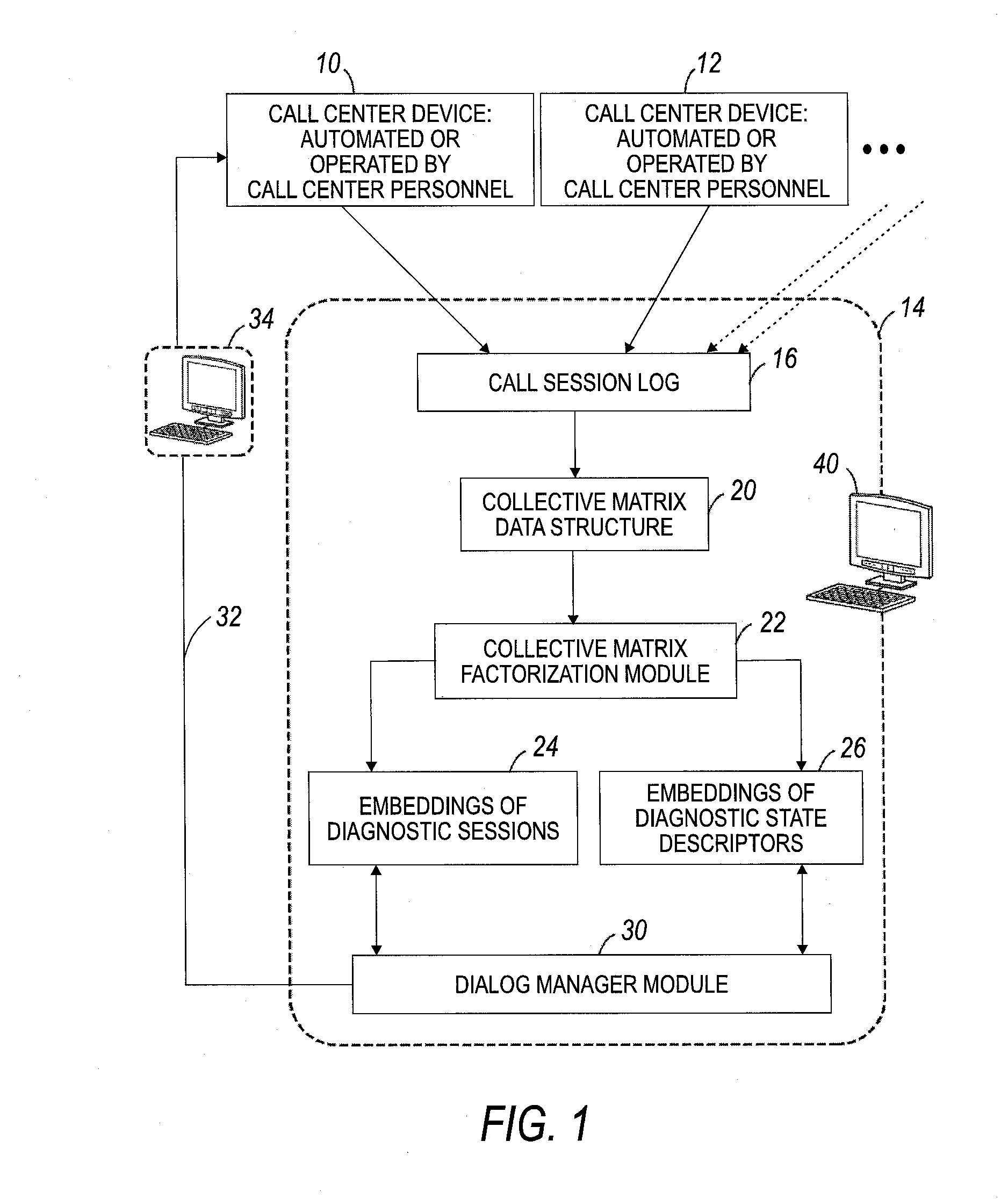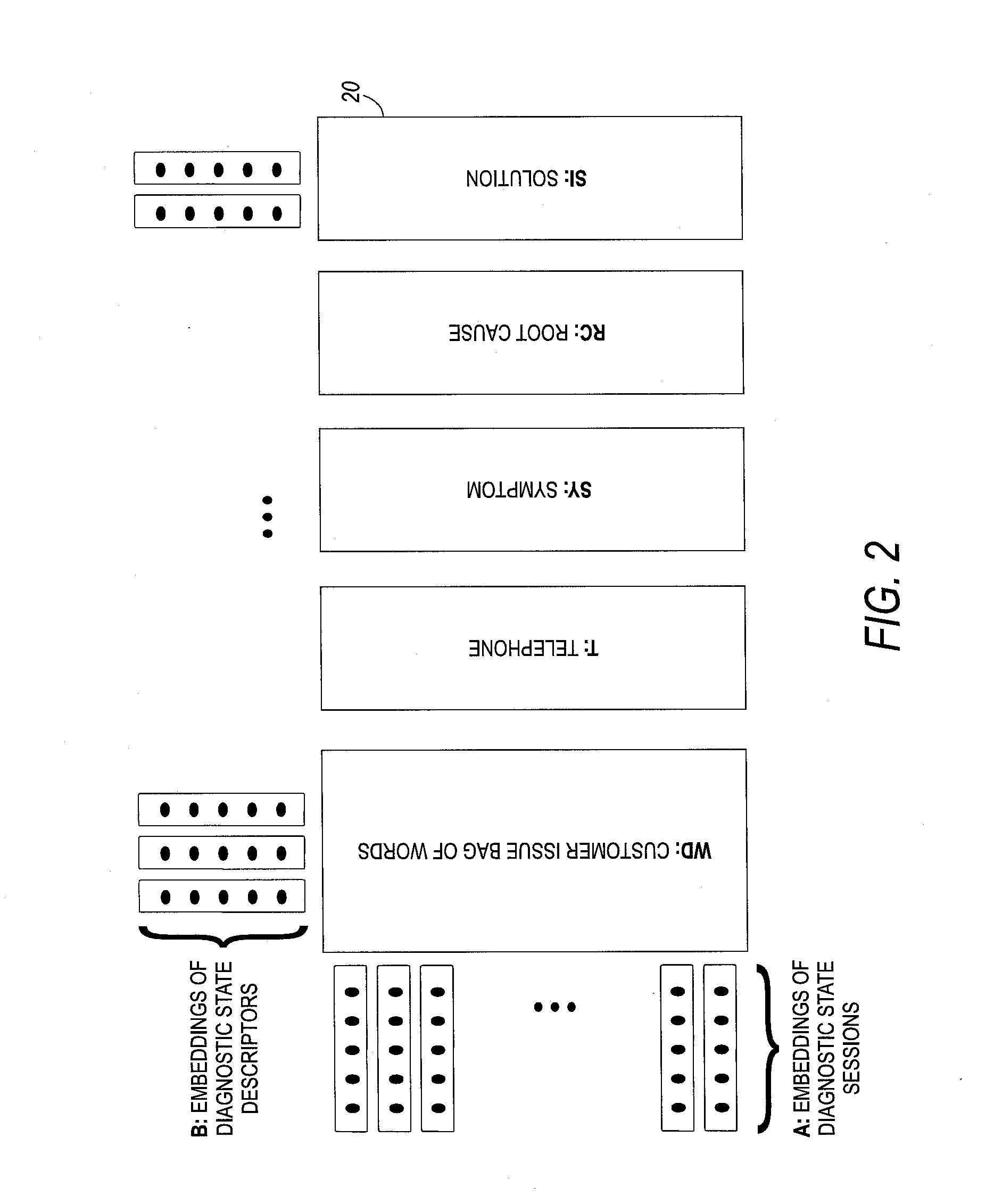Spectral diagnostic engine for customer support call center
- Summary
- Abstract
- Description
- Claims
- Application Information
AI Technical Summary
Benefits of technology
Problems solved by technology
Method used
Image
Examples
Embodiment Construction
[0014]Rules-based diagnostic engines are typically built upon large set of usually hand-crafted rules aiming at summarizing the overall possible situations the diagnostic system is intended to handle. Other diagnostic engine methodologies employ a stepwise machine learning approach including three steps: (1) Symptom identification; (2) Root Cause detection; and (3) Solution finding. Such diagnostic engines typically link these three steps through separate learning systems employing naïve Bayes classifiers or SVMs. In general, rules-based diagnostic engines suffer from a tendency for low recall and high precision behavior, are difficult to set up and maintain, and are generally unable to autonomously adapt to new context (for example, if the vendor comes out with a new or improved product, the corresponding rules need to be manually updated).
[0015]On the other hand, stepwise diagnostic systems employing Bayes inference or heuristic algorithms are typically unable to leverage interdep...
PUM
 Login to View More
Login to View More Abstract
Description
Claims
Application Information
 Login to View More
Login to View More - R&D
- Intellectual Property
- Life Sciences
- Materials
- Tech Scout
- Unparalleled Data Quality
- Higher Quality Content
- 60% Fewer Hallucinations
Browse by: Latest US Patents, China's latest patents, Technical Efficacy Thesaurus, Application Domain, Technology Topic, Popular Technical Reports.
© 2025 PatSnap. All rights reserved.Legal|Privacy policy|Modern Slavery Act Transparency Statement|Sitemap|About US| Contact US: help@patsnap.com



